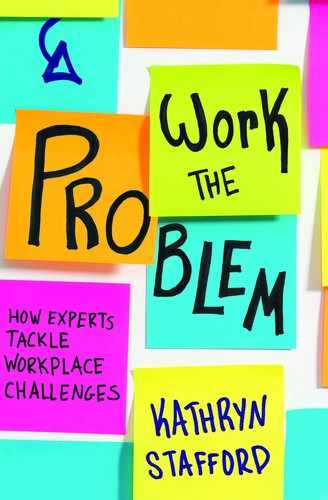TAKE 2
Commentary by Ben Locwin
Ben Locwin is CEO of a healthcare consulting organization. He has held executive roles for top pharmaceutical companies and developed human performance models for a variety of organizations.
The ultimate issue in this case study is “shiny object syndrome,” where Marshall (and, frankly, the board) can’t decide on a course of action and supportive strategy, so he chases after every single new idea that comes up. That is a course destined to founder. Specifically, with the team in charge of execution, Marshall is completely inept at crafting and executing a tangible strategy, which has led to uncertainty among the team, high attrition, and a frustrated senior member (Laura).
There’s an interesting phenomenon that occurs when an outsider —in this case, Marshall—comes into a fairly insular group, and that is the halo effect. The outsider is often given undue admiration and attention because they aren’t part of the social group. Their words are lavished with outsized importance because they came from “outside.” But Marshall, at this level and point in his career, is unable to be rehabilitated. The principally value-added action would be to replace him forthwith. He clearly doesn’t have a strategic vision or a plan of attack, hence his scattered coverage of items of varying importance. There’s also an issue with scalability in his application of an approach—just because something works for a big-city event, for example, doesn’t mean a smaller version of that will work in a town. It’s entirely different thinking—not just shrinking the big vision to fit the small.
Choosing a true leader who has a vision compatible with what the town is interested in would lead to the highest probability of success, but Bayside Group’s board of directors did not do that. The whole board, in all likelihood, needs to have their tenure challenged. The city’s needs have changed since the early 1990s, so the whole overall perspective of Bayside Group needs to change, too.
Regarding Laura, I would suggest that she stay if she thinks she can continue to enjoy the work, or leave if she can’t work well with Marshall. She shouldn’t think that leaving is the best choice, because that brings its own risks. But she should also know that she will not be able to change how Marshall conceives of his plans or manages the Group and its resources. Most of these practices are entrenched and highly resistant to modification. This is why she needs to decide if she can live with, and function within, his management style—no amount of commentary she gives will appreciably change how he operates.
I’d recommend that Laura think about this situation from a psychological compatibility perspective. She doesn’t need to let her inertia keep her there, if she truly feels like too many pieces are broken and that Marshall can’t be reformed. On the other hand, Will and Julie were also artifices of the past ways of working, which clearly aren’t the direction Marshall and the executives want to move. It will be easier to make changes happen once they hire replacements for Will and Julie, based on their technical merits and ability to conform to the new perspectives.
As for Walter, who heads up the board of directors, sometimes getting rid of those who subscribe to the past’s school of thought paves the way for more contemporary views. Not all former leaders are compatible with what the future will hold. However, Walter needs to be careful. He has no evidence that his own proposal to invigorate the tax base will work.
I would suggest everyone—Laura, Walter, Marshall, and the board members—read Kouzes and Posner’s The Leadership Challenge (2012), which is a great book on the overall aspects of leadership from a variety of different perspectives and angles. It shows that while leadership doesn’t look the same in every scenario, it is indeed about making the business a better place tomorrow than it was today. In this sense, particular elements such as trust, communication, and creating a vision are discussed in ways that make many of Marshall’s and Bayside Group’s deficiencies stand out starkly.
This is an exceedingly common scenario. I sit on several nonprofit and for-profit boards of directors, and I believe that determining who should be (or stay) in leadership is a primary concern and motivating force for improving the future. Not every installed leader or manager will work under every situation. So, understanding as best as possible the underlying perspectives, biases, and interpersonal traits each leader has in each role—and how those are related to potential success or failure within the organization given its particular challenges—is an absolutely critical element.
For example, Steve Jobs is well-known for having turned Apple around in stellar fashion. For that organization at that time and in that market, he was absolutely the right leader and a visionary. But if you had put him instead at the helm of Yahoo! when Marissa Mayer took over, he would have failed spectacularly. The two initial conditions were not the same, and therefore the outcomes would have been dramatically different. It’s important for readers to note, as well, that even analyzing Steve Jobs and Marissa Mayer in these contexts is post hoc reasoning: Only by seeing what he did, can we say “he was the right person for that role.” There’s no good way of doing this in advance, and that’s why it’s always a business risk.
